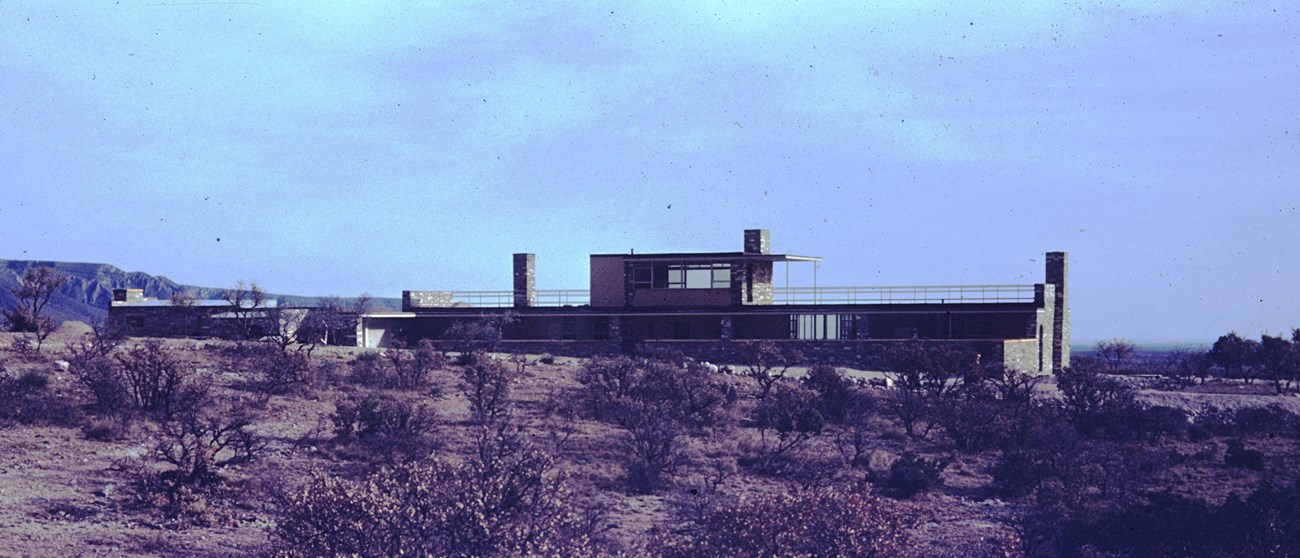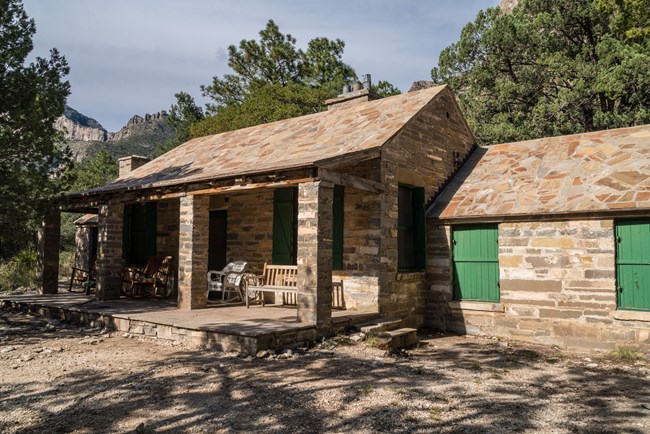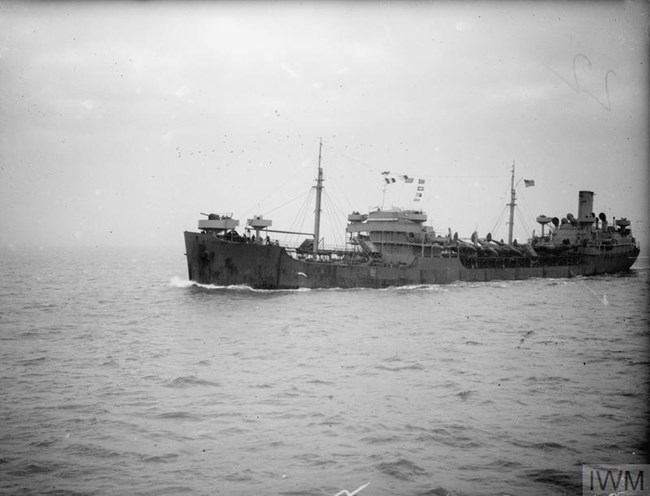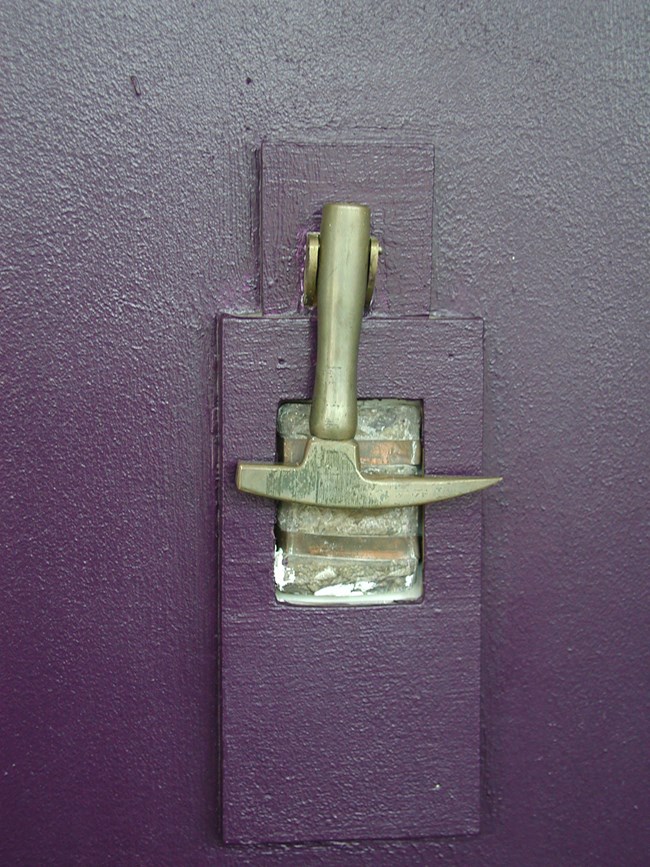Last updated: December 23, 2022
Article
Ship on the Desert: The Pratt Family in the Guadalupe Mountains

NPS/Pratt Family Photos
Our view from our new home . . .would be magnificent, but with a totally different type of grandeur. . . The sun would rise above a far distant eastern horizon but with a burst of color that would rival the most glorious of sunsets. Sunsets in the east! Sunsets at dawn!
- Wallace Pratt

NPS/Laurence Parent
The Pratts Arrive in the Guadalupe Mountains
The Guadalupe Mountains are the ancestral homeland of numerous indigenous groups, including the Mescalero Apache. By the 1870s, US Army Buffalo Soldiers had driven the Mescalero onto reservations. Soon, both white and Hispanic farmers and ranchers began establishing more permanent residences. These small ranches, including Frijole Ranch and Williams Ranch, dotted the surrounding hills. In 1921, Wallace Pratt, an oil geologist with the Humble Oil Company was given the opportunity to see “the most beautiful spot in Texas” - McKittrick Canyon. By 1931, Wallace and his wife, Pearl, had purchased a large section of McKittrick Canyon and constructed a stone cabin along a wash inside the canyon.
Imperial War Museum
An Unlikely Inspiration For a Home.
In 1940, Wallace Pratt’s wife, Pearl, died in Kansas. In early 1941, Pratt, now a Vice President of the Standard Oil Company, married Iris Calderhead, a former leader of the women’s suffrage movement and National Woman’s Party. Within days of their marriage, they began planning a new home just outside McKittrick Canyon.A few years earlier, in 1937, the Standard Oil Company had launched an oil tanker named for Pratt. During World War II, while Iris and Wallace were building a new home in Texas, the Wallace E. Pratt made 93 voyages across the Atlantic Ocean, delivering nearly 9 million barrels of oil to support the Allied War effort. The Pratts hired Elizabeth and Newton Bevin from the New York City Architectural firm Miliken & Bevin to design a modernist home in the West Texas desert that resembled an oil tanker. Construction began in 1942 and by 1943 the “Ship on the Desert” was complete.

NPS/Pratt Family Photos
Living Aboard the Ship
Life at Ship on the Desert in the 1940s and 1950s could be complicated. Compared to the more rustic cabins and ranches belonging to other nearby families, the Pratts lived a life of luxury. The walls of Ship on the Desert were lined with books, the titles of which reveal the Pratts’ interest in classical and modern art. The house had no telephone or television during the Pratt occupancy. However, watching the sunset from the deck was certainly a recurringform of evening entertainment.Although the Pratts were officially retired by 1945, the home was often abuzz with activity. Wallace maintained an office in Carlsbad, New Mexico, which he flew to from the private runway constructed near the house. The Pratts operated a ranch, the Manzanital Ranch, out of the house, and Wallace’s children and grandchildren from his first marriage frequently visited both Ship on the Desert and the nearby Pratt Cabin throughout the 1940s and 1950s.

NPS/Giraffeascope
Charting a New Course
By 1960, Iris Pratt’s health was diminishing, and the couple moved to Tucson, Arizona in search of better medical access. Iris died there in 1966, and Wallace spread her ashes in McKittrick Canyon near Ship on the Desert.But Wallace Pratt was beginning to have other plans for the future of not just their home, but for all of McKittrick Canyon and the Guadalupe Mountains. He loved the region and began to lobby for the establishment of a national park. Beginning in 1959, he began donating his property - including Ship on the Desert, to the federal government. In 1972, Guadalupe Mountains National Park was formally established, which included Pratt’s cabin, ranch, and Ship on the Desert. When Wallace died in 1981, his ashes were scattered in McKittrick Canyon.

NPS/C. Barr
What’s Next?
The preservation of Ship on the Desert presents a series of challenges. In 2018 the building was listed to the National Trust for Historic Preservation’s annual “Eleven Most Endangered Historic Structures” list to raise support to aid the park in achieving needed preservation work. In 2022 the park entered a partnership with the El Paso Community Foundation to raise funds to provide for the future restoration of the Ship on the Desert.
For more information on how you can be a part of the restoration of Ship on the Desert, please contact the park.
